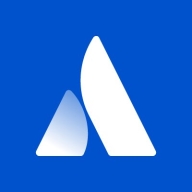

Asana and JIRA Portfolio are both contenders in the project management software category, each demonstrating unique strengths tailored to different user needs. Asana often holds the advantage for non-technical teams due to its intuitive interface, while JIRA Portfolio is preferred for Agile-oriented projects and technical teams due to its advanced customization and integration capabilities.
Features: Asana is known for its real-time updates, comprehensive task views, and easy project creation, complemented by tools like My Tasks, due date timelines, collaboration options, and the ability to comment. Its simplicity and adaptability make it ideal for teams seeking user-friendly management solutions. JIRA Portfolio provides structured workflows, Kanban boards, and seamless integration with development tools, benefiting environments that are technically sophisticated and oriented towards Agile methodologies.
Room for Improvement: Asana could improve by enhancing workflow automations, dashboard features, and integration capabilities, as well as addressing the need for automatic task date adjustments. JIRA Portfolio, while feature-rich, requires a more user-friendly interface, better training materials, and integration enhancements. Its complex setup processes and portfolio-level reporting metrics could also be simplified for better usability.
Ease of Deployment and Customer Service: Asana offers seamless deployment across public and private clouds but lacks an on-premises option. JIRA Portfolio provides more flexibility with both on-premises and cloud deployments, catering to diverse enterprise requirements. Both platforms have mixed feedback on technical support, with Asana's community support being less extensive and JIRA Portfolio experiencing occasional delays in response times.
Pricing and ROI: Asana's pricing is reasonable, featuring a free version ideal for small-scale use and premium tiers for larger enterprises, though it can be expensive for smaller organizations. JIRA Portfolio's pricing is generally higher with additional add-ons, making it cost-effective mainly for larger enterprises. Both platforms offer positive ROI with efficient project management, though careful consideration of initial and ongoing costs is necessary.
However, due to its pricing, I need to be careful about adding each user and feature.
The technical support is of high quality.
The support was good with no challenges.
In terms of scalability, I would give JIRA Portfolio a ten out of ten.
Asana is quite stable; it is a tool I can trust.
In comparison to Planisware, it is very stable.
It would be easier if I could assign tasks directly from my email without needing to open Asana.
Making the report creation process faster and easier with drag-and-drop features would be beneficial.
To add one user is expensive, which makes me cautious about upgrading or adding more users.
It is not considered expensive in the market.
Asana's automation allows me to automate deadlines and send notifications to the right people about approaching deadlines.
The reporting feature is comprehensive and easy to use, which aids in planning and forecasting.


Asana is web-based software-as-a-service that helps teams coordinate and manage their work. It helps companies move faster by making sure everyone knows the team’s plan and process and who is doing what by when.
Each user can create projects using a list, board, calendar, or timeline view. Within each project, users can add tasks, subtasks, sections, comments, attachments, start and due dates, and custom fields. Project and task followers get notifications on changes or comments on the project and/or task in their Inbox. Individual users can see all of the tasks they're responsible for across all of their projects in a view called My Tasks.
Asana is available in English, French, Spanish, German, and Portuguese.
Jira Portfolio is an agile roadmapping tool designed to help teams build plans, envision the big picture, track progress, and share the process with stakeholders.
Jira Portfolio is planned based. A plan in Portfolio is a complete view of the tasks, teams, and release dates for your Jira projects.
Once you start to create a plan, there are three main factors you need to define:
With Jira Portfolio, you can create a visual timeline to gain visibility across each of your teams and projects in a single place from a granular level and review cross-team and cross-project dependencies to prevent bottlenecks. This visibility can help you plan realistic release dates and manage your team’s capacity. The solution allows you to try out different scenarios with your roadmap and resources to help guide your decision making. Once you have a solid plan, you can easily integrate with Jira Software and commit your changes.
Jira Portfolio allows managers to easily add team members. The tool’s powerful scheduling algorithm assigns tasks to teams while taking priorities and dependencies into account so it can create a realistic forecast for project completion.
Jira Portfolio Benefits
Some of the top benefits of using Jira Portfolio include:
Reviews from Real Users
Jira Portfolio stands out among its competitors for a number of reasons. Two major ones are its roadmap creation tools and its flexibility.
Meeta L., a lead product manager at a tech vendor, says, “The valuable features of the JIRA Portfolio are the customization it provides which is very useful and the Agile project management capability.”
Juan P., a senior IT project manager at Avantica, writes, “Portfolio helps us increase the visibility of projects' status and management with remote workers who make up most of the company.”
We monitor all Project Management Software reviews to prevent fraudulent reviews and keep review quality high. We do not post reviews by company employees or direct competitors. We validate each review for authenticity via cross-reference with LinkedIn, and personal follow-up with the reviewer when necessary.